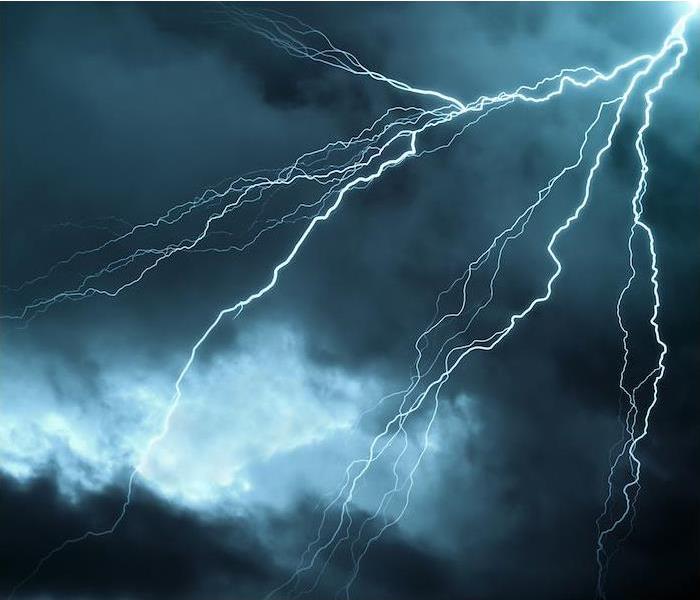How Do Thunderstorms Form? | SERVPRO® of East Mecklenburg/Matthews
9/17/2021 (Permalink)
 If thunderstorms should bring water or damage to your home or business, SERVPRO of East Mecklenburg/Matthews is your local expert in restoration
If thunderstorms should bring water or damage to your home or business, SERVPRO of East Mecklenburg/Matthews is your local expert in restoration
We experience thunderstorms regularly in the greater Charlotte area, and we know that they are a common (sometimes all too common) weather event. We might even look up into the sky or notice a drop in temperature and become aware of the impending possibility of a storm.
We often focus on the result of storms—flooding, heavy rains and water damage—but have you ever thought about what’s going in the atmosphere to actually cause one of nature’s most common weather exceptions? What are the atmospheric pieces that have to be in place to cause one?
Without getting too deep in the science, let’s take a look at the formation of thunderstorms.
How Storms Form
Ordinary thunderstorms, also called single cell storms, form when moist, warm air just above the earth’s surface rises into cold air in the atmosphere above. This causes the warm, rising air to cool, and when it does the moisture (or vapor) already present in the water condenses (shrinks and gathers in the air) and forms small water droplets.
The heavier cool air then lowers into the lower atmosphere, where it warms, rises, condenses and falls again. This continues to happen in a repetitive cycle called a convection cell, which eventually becomes a cloud.
When larger amounts of air and moisture collide, a larger convection cell can form and create a thunderstorm.
3 Stages of a Storm
Most storms form in a pattern of three stages:
The Cumulus Stage, described above as the formation of the formation of the convection cell. The warm air meets the cold air, and condensation begins.
The Mature Stage, where the cloud turns grey as more moisture condenses, and the condensed droplets become too heavy to rise anymore. They begin to fall, and we have ourselves a thunderstorm. The air moving within the clouds here also builds up an electric charge, and this (in a very simplified way) is why we get lightning.
The Dissipating Stage, in which cool, dry air that has been pulling rain down toward the ground (aka a downdraft) becomes stronger than the updraft of warm air, stopping the ability of droplets to form in the cloud. The cloud disappears from the bottom up, the sky clears and the storm is over.
There are lots more interesting details and several different types of storms, but we’ll let you search those out on your own for now. For now, remember:
*If thunderstorms should bring water or lightning damage to your home or business, SERVPRO is your expert friend in the restoration industry. Let us help you when disaster strikes. *





 24/7 Emergency Service
24/7 Emergency Service